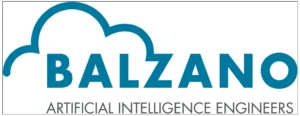SQL Server 2019 release candidate refresh with Big Data Clusters
In continuation with our announcement of SQL Server 2019 release candidate last week, we’re announcing that the release candidate refresh for SQL Server 2019 is now available to download. The release candidate now includes bits for Big Data Clusters in SQL Server 2019 in this refresh.
Back in July, we announced the preview of Big Data Clusters in SQL Server 2019 and since then we’ve seen our customers actively bringing their big data analytical workloads to SQL Server 2019 to operationalize their AI and machine learning projects.

“Building and deploying our vertical AI-solution for clinical radiology combines very diverse implementation paradigms, data formats, and regulatory requirements. SQL Server 2019 Big Data Clusters allowed us to accommodate and integrate all aspects from one shared platform – for our data scientists with their deep learning as well as for our software engineers who wire up workflows, security, and scalability. At runtime, our healthcare customers benefit from simple containerized deployment and maintenance while being able to move our solution between on-prem and the cloud easily.” – René Balzano, Founder and CEO of Balzano
Big Data Clusters in SQL Server 2019 gives you the ability to build new big data applications in SQL Server or move your existing big data workloads to SQL Server to gain transformative insights from your data.
Some common use cases for Big Data Clusters in SQL Server 2019 include:
- Analytics over big data: With SQL Server 2019, you can analyze any type of data, structured, or unstructured with the power SQL and Apache Spark™
- Data virtualization: You can gain insights from all of your data by querying across data stored in Oracle, Teradata, other SQL Servers, Azure SQL Database, Azure SQL Data Warehouse, Azure Cosmos DB, Cloudera, Azure Data Lake, or the Hadoop Distributed File System (HDFS) built in to SQL Server Big Data Clusters without moving or replicating the data. You can have one single query point from where you run your T SQL code or connect your apps and BI tools to, joining your disparate data together into a single query result.
- AI in SQL Server: You can deploy scalable clusters of SQL Server, Apache Spark™, and HDFS running on Kubernetes. It provides all the tools and popular machine learning libraries to ingest, store, and prepare data for analysis as well as to train and operationalize machine learning models.
There are several scenarios in which SQL Server Big Data Clusters lets you interact with your big data. Please visit the SQL Server Big Data Clusters documentation to learn more.
To deploy the release candidate for SQL Server 2019, please review the documentation to learn more.
Ready to learn more?
- To experience release candidate bits for SQL Server 2019, please find the installation instructions on SQL Server 2019 release candidate
- To get started with SQL Server 2019 release candidate on Windows, Linux, or containers, you can find the download and installation instructions on the SQL Server 2019 web page or use a SQL Server 2019 community technology preview virtual machine in Microsoft Azure.
- Check out what features were introduced in SQL Server 2019 release candidate.


